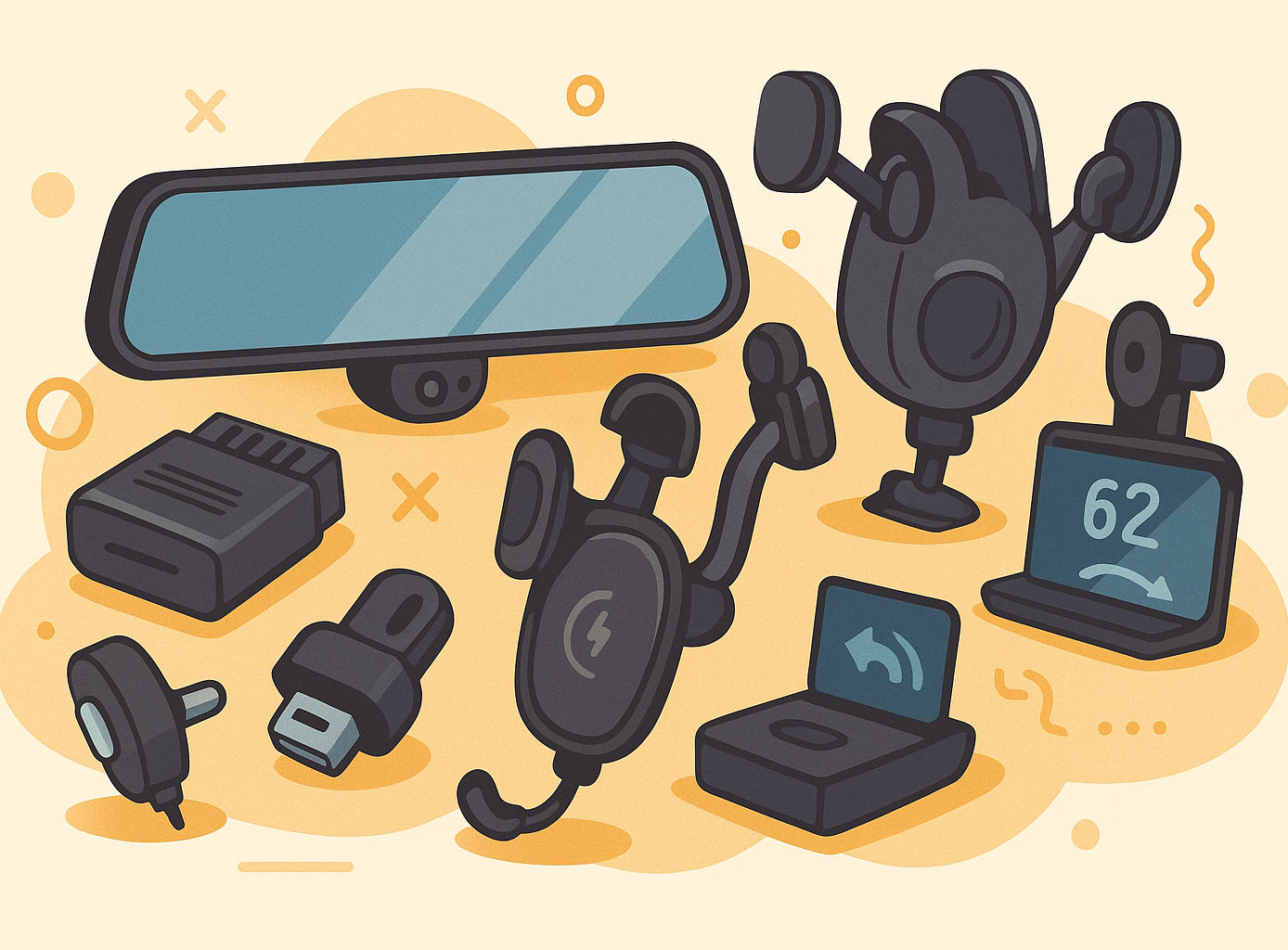Top 10 AR Glasses to Watch in 2025
July 14, 2025
As we step deeper into the era of immersive technology, augmented reality (AR) glasses are quickly moving from science fiction into everyday life. In 2025, AR wearables are no longer niche gadgets for developers or early adopters—they're fast becoming essential tools for entertainment, productivity, navigation, and remote collaboration. From lightweight smart glasses that seamlessly overlay digital data onto your physical world to high-powered enterprise headsets used in surgery and engineering, AR eyewear technology is evolving at a rapid pace.
What’s driving this revolution? The convergence of 5G connectivity, AI-powered contextual awareness, and miniaturized optics means today's AR glasses are more powerful and less bulky than ever. Tech giants and startups alike are racing to define the future of mixed reality experiences by delivering high-resolution visuals, real-time object recognition, and seamless integration with smartphones and cloud platforms. Whether you’re a creative professional, gamer, traveler, or business leader, 2025’s top AR glasses are shaping up to become indispensable.
This curated list of the top 10 AR glasses to watch in 2025 explores the most promising, innovative, and functional options that balance form and function. Each entry dives into what makes these devices standout—whether it's their field of view, gesture control, battery life, or use-case specialization. From spatial computing titans to sleek consumer-focused frames, discover the next-generation AR glasses worth your attention.
10. Oppo Air Glass 3

Sleek and minimalist, the Oppo Air Glass 3 is one of the most stylish entries in the 2025 AR lineup. This monocle-style smart glass prioritizes elegance and day-to-day usability over industrial-grade functionality. With upgraded Si-OLED lenses, spatial audio, and an advanced voice assistant, the Air Glass 3 is a natural fit for commuters, shoppers, and professionals who want subtle yet functional AR integration.
The device seamlessly syncs with Oppo phones and can display notifications, calendar events, translations, and even offer turn-by-turn walking directions via visual overlays. What makes the Air Glass 3 notable is its AI-powered context awareness, which adapts displayed content based on your location, time, and calendar entries.
Designed for lightweight use, the battery supports full-day operation with intermittent interaction, making it more like a smart assistant for your eyes than a constant HUD. Oppo’s vision for ambient computing is clear: keep users connected and informed without distracting them from the physical world.
9. Lenovo ThinkReality A3

Lenovo’s ThinkReality A3 remains a top contender in enterprise AR eyewear due to its modularity and robust performance. Designed for business users and professionals, it supports dual 1080p displays, depth perception cameras, and advanced AI object tracking. With a focus on remote assistance and 3D visualization, the A3 can turn any workspace into a collaborative digital environment.
Connected to Motorola or ThinkPad devices, the ThinkReality A3 shines in virtual multi-monitor setups, offering a clutter-free desktop experience with up to five resizable AR displays. It’s particularly valuable for developers, architects, and financial analysts who require multiple screens without physical hardware.
Its rugged construction and modular face shields also make it ideal for sterile environments like labs or assembly lines. As Lenovo expands its ThinkReality ecosystem, the A3 continues to evolve with new apps and services, making it one of the most adaptable AR solutions for professionals in 2025.
8. Rokid Max AR

The Rokid Max AR glasses offer a compelling option for those seeking a balance between entertainment and productivity. These glasses are known for their immersive 4K OLED displays, lightweight construction, and a focus on media consumption. Compatible with phones, PCs, and gaming consoles, Rokid Max is gaining traction as the portable AR display of choice for digital nomads and tech enthusiasts.
Its dual-screen setup enables split-view multitasking, while its voice control and trackpad make UI navigation fluid and accessible. What distinguishes Rokid in 2025 is its commitment to cross-platform compatibility, allowing users to jump between Android and Windows ecosystems effortlessly. They’ve also rolled out a custom AR launcher that simplifies app discovery and usage.
While the Max may not boast the same industrial power as HoloLens or Magic Leap, its versatility, portability, and price point make it a smart choice for anyone looking to dip into augmented reality without compromise. Whether you're watching Netflix on a virtual screen or managing emails mid-commute, Rokid Max offers a truly modern AR experience.
7. Vuzix Shield

The Vuzix Shield stands out as one of the best enterprise-focused AR glasses with a compact and glasses-like design. Built for field service technicians, logistics workers, and first responders, the Shield combines waveguide optics, noise-canceling microphones, and dual 1080p cameras for hands-free data access and real-time collaboration.
Vuzix emphasizes durability and performance, packing the Shield with Snapdragon XR1 processors and ANSI-rated impact protection. The integrated heads-up display allows workers to view checklists, instructions, or video feeds while keeping their hands free. Remote experts can annotate live feeds and guide on-site employees in real time—an invaluable tool for AR-assisted repair and maintenance.
In 2025, the Vuzix Shield continues to lead in industrial AR innovation, supported by partnerships with logistics firms, defense contractors, and healthcare providers. With a battery life that spans an entire shift and support for Microsoft Teams and Zoom, this device is built for long, rugged use in environments where precision and efficiency matter most.
6. Snap Spectacles 5 AR

Snap has matured its Spectacles line with the fifth-generation Snap Spectacles AR, bringing meaningful upgrades to its social-first smartglasses. Designed with content creation in mind, this edition features dual waveguide displays and dual cameras that support real-time 3D filters, world effects, and AR lenses. This makes the new Spectacles ideal for influencers, vloggers, and creatives who want to elevate their visual storytelling.
Snapchat’s Lens Studio integration allows developers to create bespoke AR experiences tailored for this headset. The onboard processor is faster, offering smooth performance for live AR effects, and the color fidelity of the displays has been significantly improved. The glasses even let users preview and edit their captured AR content on the fly—no phone required.
With a smaller footprint and lighter materials, Snap Spectacles 5 are comfortable enough for daily wear and boast an impressive AR camera experience that rivals more expensive gear. While not a productivity powerhouse, it’s the go-to AR device for Gen Z creators looking to experiment with mixed reality in fun and interactive ways.
5. XREAL Air 3

Formerly Nreal, XREAL continues to make waves in the consumer AR space with the release of the XREAL Air 3. These lightweight and affordable glasses are aimed at tech-savvy users who want AR entertainment on the go without breaking the bank. With an ultra-light titanium frame and stylish design, the Air 3 looks more like sunglasses than tech gear—but packs impressive capabilities.
The glasses project a 201-inch virtual display at a simulated distance, perfect for watching movies, gaming on the go, or using productivity apps. They are compatible with Android smartphones, Steam Deck, and Windows laptops, offering versatility that few competitors can match. The latest model introduces motion tracking, spatial audio, and a redesigned optical engine for clearer image quality in various lighting conditions.
What makes the XREAL Air 3 stand out in 2025 is its ability to democratize personal AR displays, making them accessible to students, gamers, and creatives alike. They don’t attempt to replace your phone—they extend it with a vivid, cinematic layer of interaction that feels natural and enjoyable. These are arguably the most affordable AR glasses with cinematic potential available today.
4. Magic Leap 3

Magic Leap has made a bold comeback with the Magic Leap 3, tailored primarily for healthcare, defense, and enterprise collaboration. This powerful headset continues to differentiate itself with its lightweight design and advanced optics, delivering stunning 3D holograms without causing visual fatigue. Its standout feature is the ability to layer complex spatial data with millimeter-level precision, making it ideal for remote diagnostics, virtual prototyping, and AR training modules.
The Magic Leap 3 leverages its proprietary Lightfield display technology, creating realistic holographic experiences that blend almost imperceptibly with real-world elements. It also supports robust SDKs for enterprise developers to craft custom AR workflows for mission-critical tasks. Doctors are using it to visualize anatomy during operations, while logistics companies are deploying it for real-time inventory mapping.
Despite being built for professional use, Magic Leap has partnered with several creative studios to develop storytelling experiences that highlight the platform’s AR narrative potential. With improved battery efficiency, Wi-Fi 6E support, and wearability comfort, the Magic Leap 3 reinforces its position as a premium choice in the industrial AR landscape.
3. Microsoft HoloLens 3

Geared toward enterprise and industrial users, the Microsoft HoloLens 3 represents the pinnacle of mixed reality productivity tools in 2025. This third iteration builds on the strengths of its predecessors—offering superior comfort, a larger field of view, and increased depth mapping capabilities. With full integration into Azure Cloud Services, the HoloLens 3 serves professionals in medicine, manufacturing, engineering, and education.
What sets this model apart is its use of AI-enhanced object recognition and real-time environment mapping, which enables precise interaction with digital twins and virtual assets. For example, surgeons can view holographic models during procedures, engineers can troubleshoot machinery with live annotations, and educators can conduct virtual labs with students across the globe.
The headset’s eye-tracking sensors now allow for more intuitive UI navigation, and the inclusion of haptic feedback wristbands enhances immersion by adding a touch of physical interaction. It’s not designed for the average consumer, but for businesses seeking to boost productivity and collaboration in hybrid environments, the HoloLens 3 is an invaluable tool in the AR hardware ecosystem.
2. Meta Ray-Ban AR 2

Building on the success of its first smart glasses collaboration with Ray-Ban, Meta is launching the Meta Ray-Ban AR 2 with a firm focus on everyday functionality. These stylish glasses merge classic Ray-Ban design with cutting-edge augmented features for social, entertainment, and productivity purposes. The new model brings an improved binocular AR display, integrated speakers, and open-ear audio technology for seamless voice-guided navigation and calls.
The biggest upgrade in this generation is the inclusion of Meta’s AR Assistant, which can recognize objects, translate text, and even interact with your environment. With deep integration into Instagram, WhatsApp, and Messenger, users can share what they see instantly via voice command. Meta is pushing hard on spatial social networking, and the AR 2 reflects this by letting users overlay content in physical spaces for friends to discover.
Battery life has been extended to support a full day of usage, and the glasses now include gesture recognition, letting you swipe through songs or notifications with a flick of your hand. For users who want a fashionable yet functional AR smartglass solution, the Meta Ray-Ban AR 2 delivers a perfect blend of style and substance.
1. Apple Vision Lite

The much-anticipated Apple Vision Lite is expected to be a game-changer in the consumer AR space. Designed as a more affordable and lightweight version of the Apple Vision Pro, the Vision Lite blends sleek Apple aesthetics with intuitive iOS integration. Its featherlight frame houses advanced microLED displays, offering crisp overlays of directions, notifications, and app interfaces directly into the user's line of sight.
Powered by Apple’s custom R-series chip, the Vision Lite seamlessly connects to your iPhone, allowing you to access FaceTime, Maps, Safari, and more through subtle gaze tracking and voice commands. This approach provides a hands-free augmented reality experience that doesn’t require bulky hardware or a steep learning curve. Ideal for productivity on the go, it also supports Apple Health features, giving fitness enthusiasts real-time workout stats during runs or gym sessions.
Early beta testers report that the device excels in indoor navigation, translating signs in real time, and even offering AI-powered reminders based on location. If Apple delivers on its promise of a sub-$1000 price tag, the Vision Lite could be the mainstream AR headset that accelerates mass adoption across industries and lifestyles.
Final Thoughts
The world of AR glasses in 2025 is more vibrant and diverse than ever before. From sleek, consumer-ready designs like the Apple Vision Lite and XREAL Air 3, to enterprise powerhouses like the Microsoft HoloLens 3 and Lenovo ThinkReality A3, the field is teeming with innovation. Each headset on this list has its unique strength, whether it's immersive entertainment, real-time productivity, or collaborative mixed reality.
As augmented reality technology continues to mature, we can expect these glasses to become even more lightweight, powerful, and affordable. Developers are building rich ecosystems around these devices, ensuring that functionality will only improve with time. Whether you're interested in spatial computing for work, interactive storytelling, or simply AR-enhanced daily life, there's an AR headset tailored to your needs.
Choosing the right AR glasses in 2025 depends on your lifestyle, goals, and environment—but one thing is clear: this is the year augmented reality becomes truly mainstream. Keep your eyes on these devices—they’re not just tech trends, they’re the future of how we see and interact with the world.


